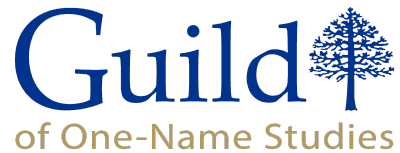Henry Pemberton (1694–1771), physician and mathematician, was born in London, the third son of Edward Pemberton and his wife, Elizabeth. Henry’s father, a wealthy fruiterer, intended his son to become a physician; it was mathematics, though, which became his serious avocation. He also made contributions to the appreciation of contemporary poetry, and cultivated a degree of musical appreciation.
Pemberton’s delicate health caused him to be sent to a country grammar school in Guildford, Surrey, where he first felt an attraction to mathematics. Having returned to London, he read classics with John Ward (later professor of rhetoric at Gresham College), but also devoted much time to the study of Apollonius of Perga’s Conics. Despite these inclinations to antique studies, he was set to study medicine, and followed a common route of the day to Leiden, where he came under the influence of Herman Boerhaave. Pemberton next went to Paris to improve his knowledge of anatomy. James Wilson, Pemberton’s contemporary biographer, maintained that Pemberton’s mechanical dexterity helped him to become competent in dissection and surgery. While in Paris, Pemberton formed several scientific friendships, some of which led to his acquiring, at a sale there, a portion of the library of the mathematician Abbé Galois. After returning to London Pemberton attended St Thomas’s Hospital to learn ‘London physic’, but never practised medicine regularly. In 1719 he again visited Leiden and graduated MD; by now he was a friend of Boerhaave, at whose house he lodged. In the same year Pemberton published Dissertatio de facultate oculi and On the Power whence the Eye may Discern Objects Distinctly at Distances; the latter was a work showing how certain results of Roger Cotes, hitherto found using ratios and logarithms, could be obtained using a circle and parabola. Pemberton became a fellow of the Royal Society in 1720.
About the same time Pemberton showed to John Keill certain new mathematical solutions he had obtained. Keill brought them to Sir Isaac Newton’s attention, but the latter declined to take notice of them, believing that Pemberton was then connected with the circulation of untruths about him. However, Pemberton came to be on intimate terms with Richard Mead, Newton’s physician; he helped Mead to write the eighth edition of his treatise on the plague, and, in 1724, to edit W. Cowper’s Myotomia reformata (on muscles). At this time an Italian, M. Poleni, produced a paper about the force generated by a moving body on impact, which Pemberton refuted as erroneous. Pemberton’s treatment of the problem was passed to Newton and this, together with Newton’s own refutation of Poleni’s thesis, was published in the Philosophical Transactions in 1772. Intercourse between Newton and Pemberton thus became established and Pemberton was invited to superintend the editing of the third edition of the Principia mathematica, which appeared in 1726. Pemberton was then about thirty years old and was rightly flattered to get the opportunity to work so closely with the great eighty-year-old Newton. However, Newton often ignored Pemberton’s editorial suggestions. Pemberton wrote A View of Sir Isaac Newton’s Philosophy (1728), which he had partly read to the dying Newton. It made no great mark but could at least be recommended as being propaedeutic.
In 1728 Pemberton was elected Gresham professor of physic, and his Scheme for a Course of Chymistry to be Performed at Gresham College appeared in 1731. A set of lectures based on his course was published in 1771 and a second set on physiology in 1779; in both cases the editor was James Wilson.
Pemberton was said to have spent seven years (1739–46) preparing the fifth London Pharmacopoeia for the Royal College of Physicians, which edition proved he was well acquainted with pharmacy. It appeared in 1746 as Translation and Improvement of the London Dispensary, for which he was rewarded by 100 guineas and the gift of the volume’s copyright.
Pemberton also encouraged a number of younger scholars. These included the young scientist–engineer Benjamin Robins, who was introduced to Pemberton on leaving school. Both Pemberton and Robins were also close friends of James Wilson. The poet Richard Glover also came under Pemberton’s wing on leaving school. In 1738 he wrote Leonidas, an epic on which Pemberton made some acclaimed observations. Pemberton also wrote an Account of the Ancient Ode which prefaced Gilbert West’s Translations of Pindar (1748).
Wilson’s preface to Pemberton’s Course on Chemistry (1771) is a substantial, detailed biography of Pemberton by one who knew him extremely well, describing in it his character as delicate, pleasant, and cultured.
Pemberton died in Cannon Street, London, on 9 March 1771, seemingly after a second attack of jaundice, and was buried in Bunhill Fields, London. He left a considerable fortune to Henry Mills, his niece’s husband.
Many articles written by Pemberton remained unpublished at his death, notably ‘A short history of trigonometry’.
The above was written by W. Johnson and is quoted entirely from the Oxford Dictionary of National Biography. It can be viewed in its source context here.


